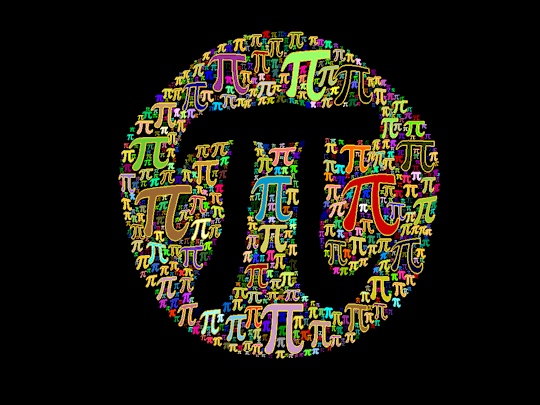
π Pi Day is celebrated on March 14th (3/14) around the world π
The number π (/paɪ/) is a mathematical constant. Originally defined as the ratio of a circle's circumference to its diameter, it now has various equivalent definitions and appears in many formulas in all areas of mathematics and physics.
It is approximately equal to 3.14159. It has been represented by the Greek letter "π" since the mid-18th century, though it is also sometimes spelled out as "pi".
It is also called Archimedes' constant.

Animation of the act of unrolling a circle's circumference, illustrating the ratio π
Being an irrational number, π cannot be expressed as a common fraction (equivalently, its decimal representation never ends and never settles into a permanently repeating pattern). Still, fractions such as 22/7 and other rational numbers are commonly used to approximate π.
The digits appear to be randomly distributed. In particular, the digit sequence of π is conjectured to satisfy a specific kind of statistical randomness, but to date, no proof of this has been discovered. Also, π is a transcendental number; that is, it is not the root of any polynomial having rational coefficients.
This transcendence of π implies that it is impossible to solve the ancient challenge of squaring the circle with a compass and straightedge.
The digits appear to be randomly distributed. In particular, the digit sequence of π is conjectured to satisfy a specific kind of statistical randomness, but to date, no proof of this has been discovered. Also, π is a transcendental number; that is, it is not the root of any polynomial having rational coefficients.
This transcendence of π implies that it is impossible to solve the ancient challenge of squaring the circle with a compass and straightedge.
https://en.wikipedia.org/wiki/Pi
π π π π π π

No comments:
Post a Comment